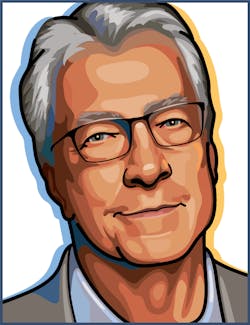Business Forum: A photonics stock market index - ready or not

Would a photonics stock market index be of value? For one, an index can provide a measure of overall industry health and a means of gauging how a company is faring within it. For example, the PHLX Semiconductor Sector Index is a modified market capitalization-weighted index composed of companies involved in design, distribution, manufacture, and sale of semiconductors. However, photonics is not a market or "industry" in the sense that semiconductor manufacturing is.
On the Laser Focus World website (www.laserfocusworld.com), the Financial News section has been updated as the LFW Photonics Market Financials (LFWSI) and now reflects many changes, mergers, and acquisitions. It is based on an evolving group of about 40 companies listed on the major U.S. exchanges. Is the LFWSI a stock market index in the sense of the PHLX? No, but it might prove useful.
Equity research firms and brokerages have analysts who track some public photonics companies associated with the technology or manufacturing sectors they specialize in: for instance, Joseph Wittine at Longbow Research and James Ricchiuti at Needham & Company. Our colleague at Strategies Unlimited, laser analyst Allen Nogee, tracks over 20 public laser companies for his annual laser market review and forecast. And SPIE has done extensive global analysis of all identifiable photonics components, systems, and photonics-enabled companies, looking at products, revenue, and employment.
These lists and analyses are helpful, but do not include enough information to satisfy my curiosity about photonics stocks. Fortunately, our financial data provider, FinancialContent, provides some tools to compare the performance of Indices or Sectors, follow individual companies in depth, see all investor-related news that the companies release, and access information about the international stock exchanges. It's relatively simple to name publicly traded companies that manufacture photonics components, such as Coherent, IPG Photonics, II-VI, or FLIR Systems. But other companies could be challenged as arbitrary choices. Do photonics-based systems manufacturers like ASML (lithography) and Illumina (fiber optics-based genetic sequencing) belong on the list? I put them there because I think they help explore the breadth and depth of photonics markets. And what about major defense contractors, with large divisions dedicated to optics, imaging, lasers, or even satellite communications? Or service providers that have business models relying on photonics to prosper, like Verizon or Google? Too big, I decided, while photonics is proportionately too small or too deeply buried in corporate infrastructure.
Having updated our Index recently reminds me of the many changes wrought by mergers and acquisitions. Numerous components companies have become part of larger companies, as in the case of seven components makers that were acquired by Newport, which was recently acquired itself by MKS Instruments. Other components companies such as CVI Melles Griot, Semrock, and Advanced Thin Films were acquired by the $2-billion manufacturing conglomerate IDEX. I put both MKS Instruments and IDEX on our list because, although photonics may not constitute a majority of their product lines, these divisions are significant players in the photonics sphere. Likewise, I included Teledyne Technologies, which acquired photonics companies such as DALSA, Judson Technologies, and Optech.

Conard Holton
Conard Holton has 25 years of science and technology editing and writing experience. He was formerly a staff member and consultant for government agencies such as the New York State Energy Research and Development Authority and the International Atomic Energy Agency, and engineering companies such as Bechtel. He joined Laser Focus World in 1997 as senior editor, becoming editor in chief of WDM Solutions, which he founded in 1999. In 2003 he joined Vision Systems Design as editor in chief, while continuing as contributing editor at Laser Focus World. Conard became editor in chief of Laser Focus World in August 2011, a role in which he served through August 2018. He then served as Editor at Large for Laser Focus World and Co-Chair of the Lasers & Photonics Marketplace Seminar from August 2018 through January 2022. He received his B.A. from the University of Pennsylvania, with additional studies at the Colorado School of Mines and Medill School of Journalism at Northwestern University.
